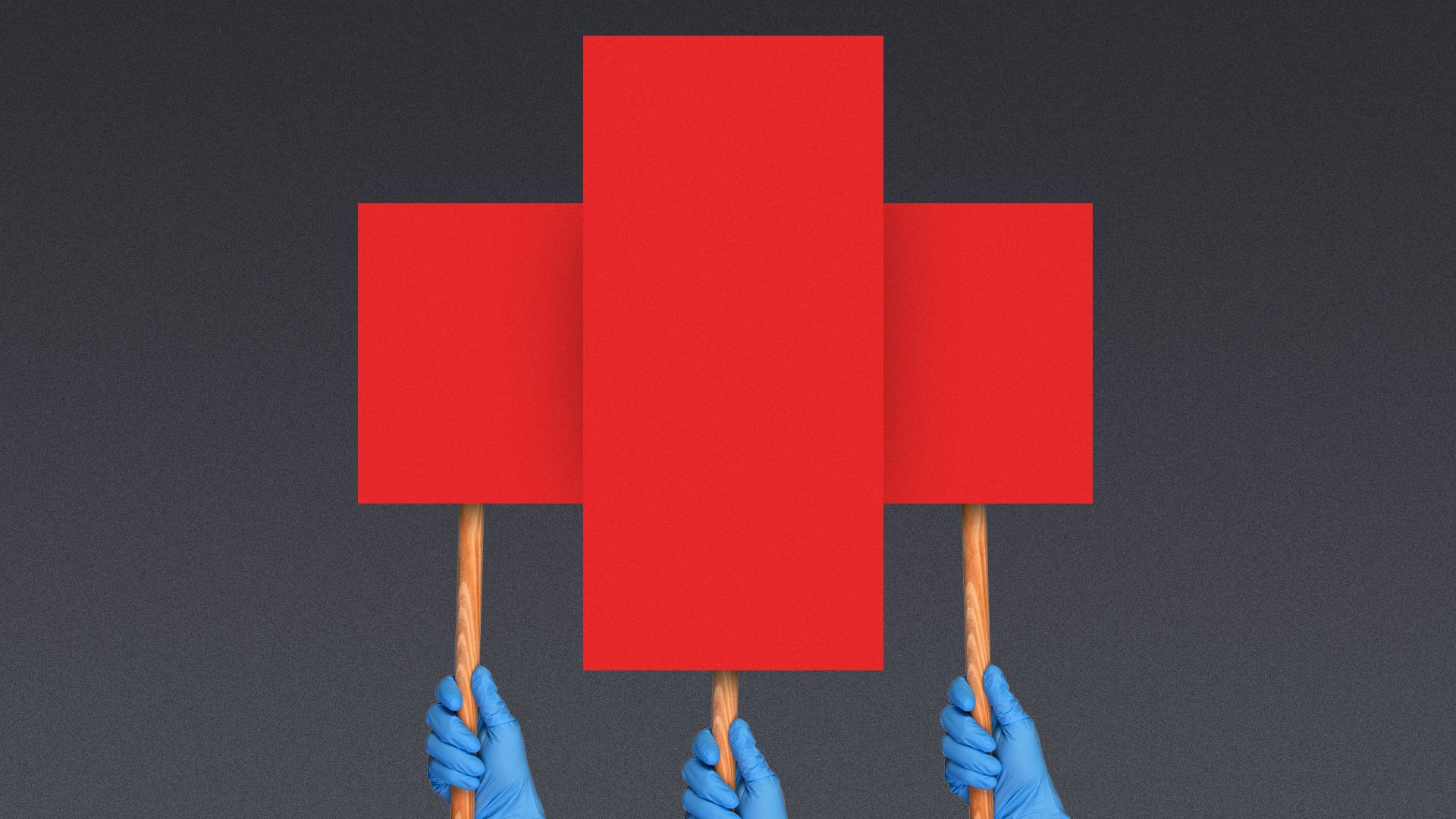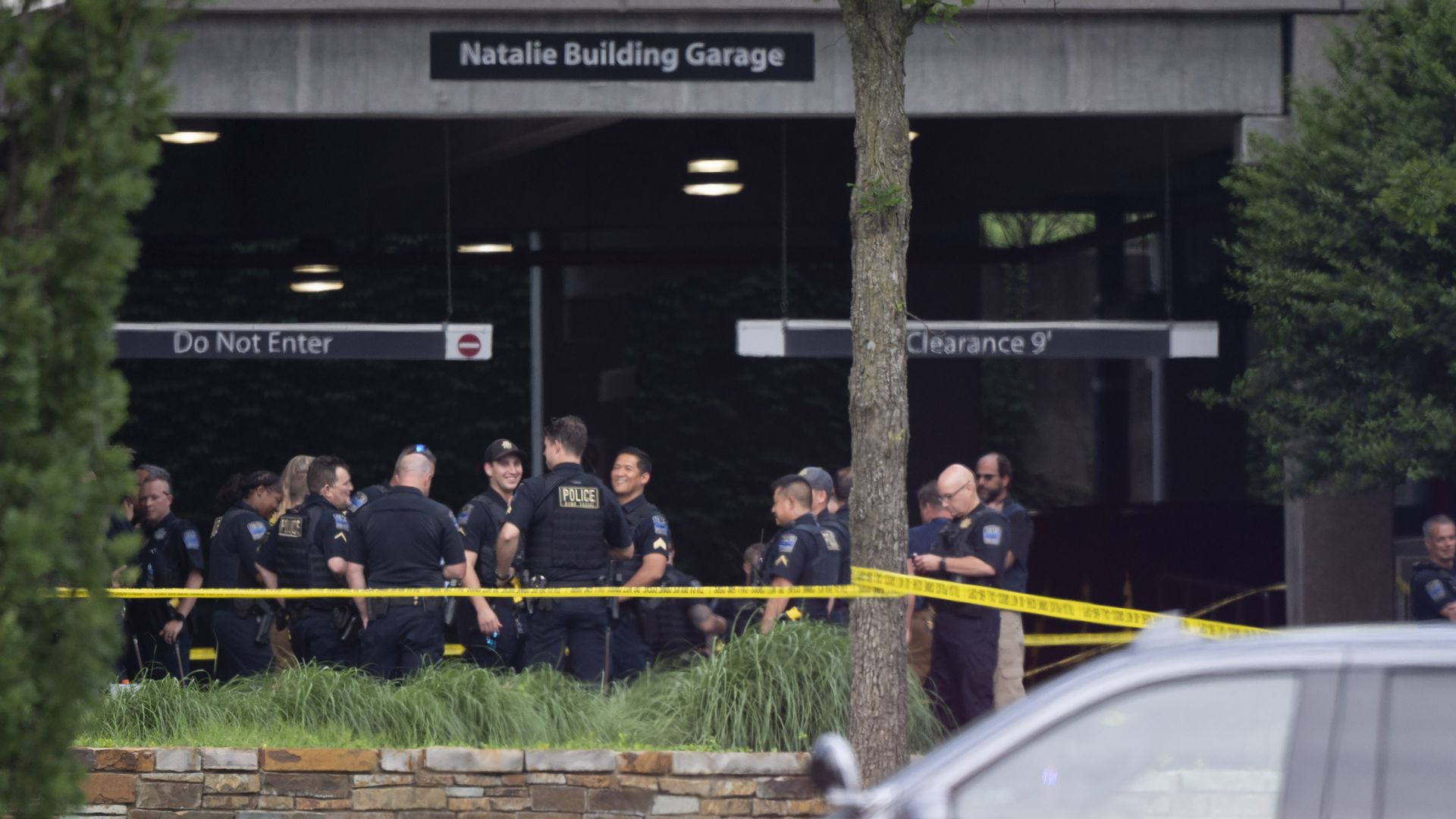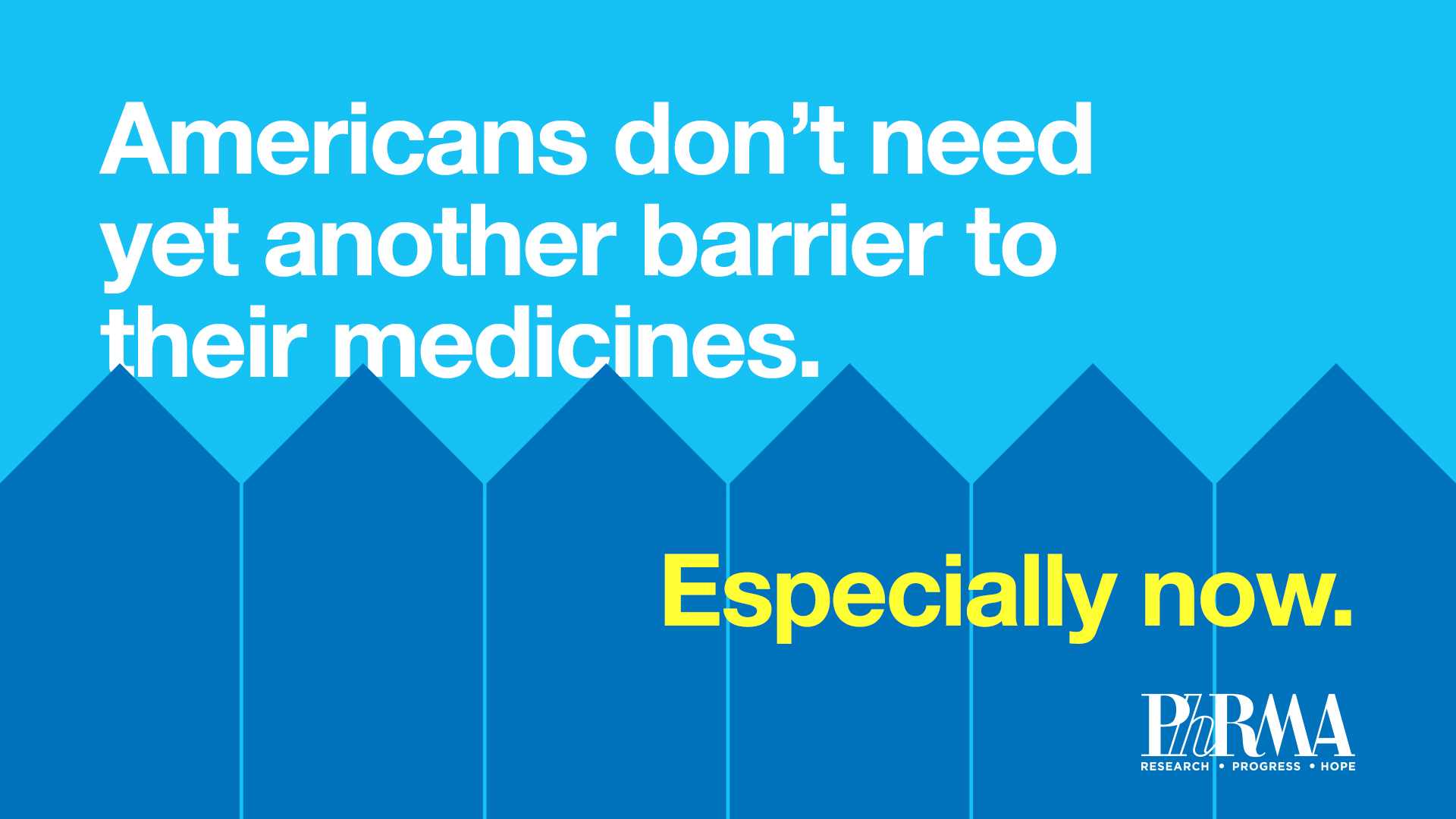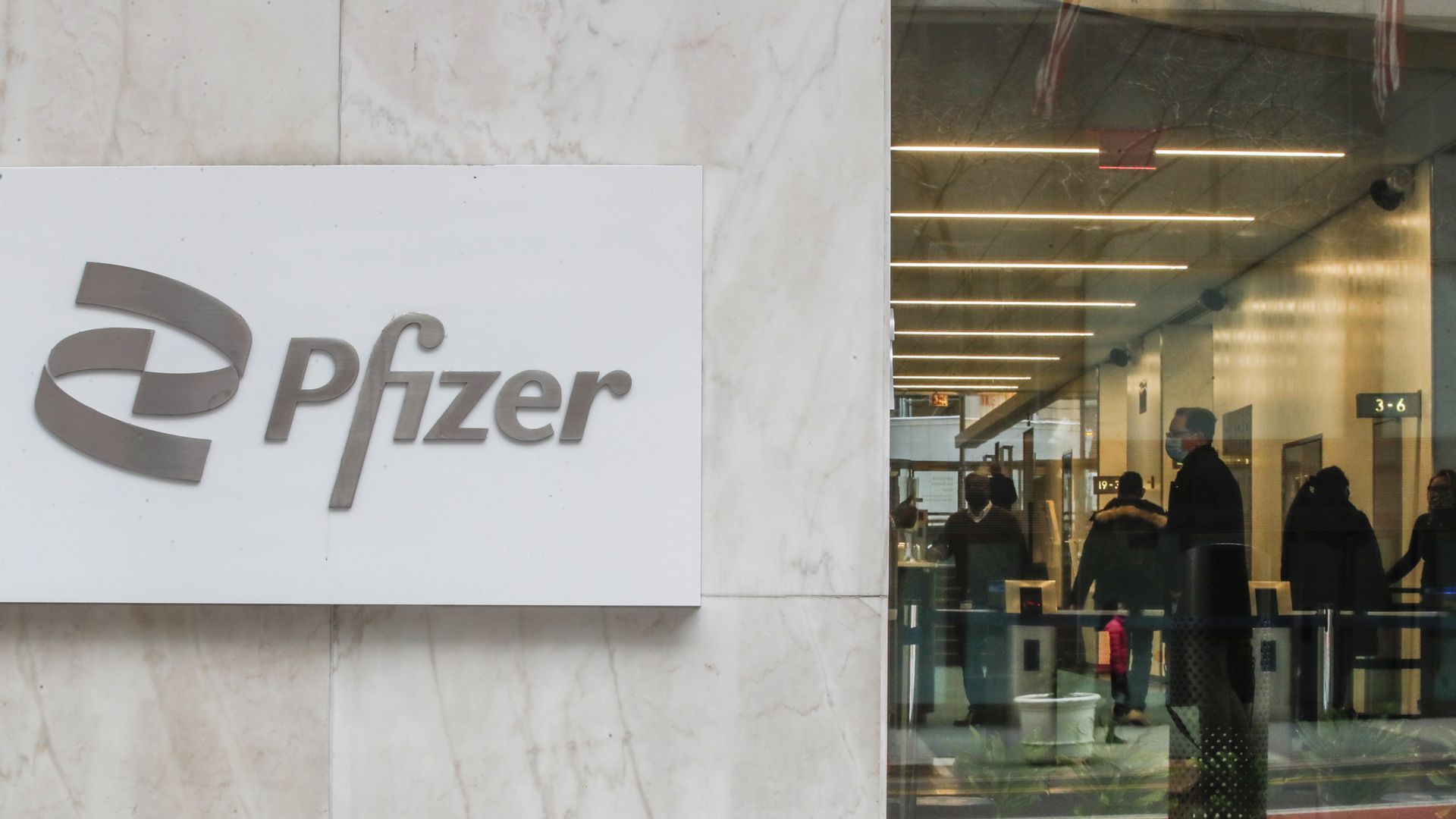| | | | | | | Presented By PhRMA | | | | Axios Vitals | | By Tina Reed · Jun 02, 2022 | | Good morning, Vitals readers. Today's newsletter is 1,036 words or a 4-minute read. 🧠 A fun new fact: When faced with surprising events, your brain sends out a burst of the substance noradrenaline in order to help you to focus and learn from it, according to study published in Nature. | | | | | | 1 big thing: COVID-fatigued health workers are mobilizing |  | | | Illustration: Shoshana Gordon/Axios | | | | Health care workers nationwide are organizing and pushing for workplace changes like staffing ratios after waves of pandemic-fueled burnout and frustration, Axios' Arielle Dreher writes. Why it matters: COVID-19 and its aftereffects triggered an exodus of health care workers. Those who stayed are demanding more from health systems that claim to be reaching their own breaking points. - "The pandemic exacerbated a crisis that was already there," Michelle Boyle, a Pittsburgh nurse told Axios. "It went from being a crisis to being a catastrophic freefall in staffing."
Driving the news: About 1,400 resident physicians in public Los Angeles County hospitals have authorized a strike if their demands for pay parity with other local facilities aren't met in contract negotiations this week in one of the latest labor actions. Less than half of the nearly 12,000 nurses polled by the American Nurses Association last year believed their employer cared about their concerns, and 52% of nurses surveyed intend to leave their jobs or are considering leaving their jobs. The other side: Hospital operators generally oppose unionization efforts, as well as mandated staffing ratios. - "The last thing we need is requirements set by somebody in Washington as to exactly how many nurses ought to be providing service at any given time," said Chip Kahn, CEO of the Federation of American Hospitals. "That ought to be a local decision based on the need in the hospital at the time."
Go deeper. |     | | | | | | 2. Another mass shooting hits health care |  | | | Police respond to the scene of a mass shooting on at St. Francis Hospital in Tulsa, Okla. Photo: J Pat Carter/Getty Images | | | | An Oklahoma, hospital campus became the site of the latest mass shooting after a gunman entered a medical building and killed four people on Wednesday, creating renewed security concerns for health care facilities. Driving the news: It followed the Uvalde, Texas, elementary school massacre last week, which left 19 children and two adults dead, and the attack at a Buffalo supermarket in May that killed 10 people. What they're saying: "Today's shooting at my med school hospital in Dayton, OH didn't even make national news because it was overshadowed by another shooting at another hospital in Tulsa, OK," one Twitter user wrote. Between the lines: While still rare, there have been several such incidents in medical settings in recent years. - In 2021, a 67-year-old man opened fire at a clinic in Buffalo, Minnesota, killing one person and wounding four others.
- In 2018, a Chicago police officer and two other people were killed in an attack at Mercy Hospital.
"So what's the solution here? Only 1 door into the hospital? Arm the doctors and nurses? Arm the patients?" tweeted Jonathan Reiner, a George Washington University School of Medicine professor of medicine and surgery. Thought bubble: Like schools, hospitals are meant to be a safe haven. But they face unique security challenges because they're supposed to be open for the public to access. - "How do you protect without locking down and telling the community to stay out?" Michele Mazurek, chief nursing officer at Mount Sinai in Chicago told me following shootings at that hospital's campus several years ago.
|     | | | | | | 3. Blue cities say they won't enforce abortion bans | | Some local officials in liberal enclaves within red states say they won't help enforce bans on abortion if the U.S. Supreme Court overturns Roe v. Wade, Axios' Oriana Gonzalez writes. Driving the news: José "Chito" Vela, a member of the city council in Austin, Texas, has proposed a resolution to decriminalize abortion locally, even as Texas has one of the most restrictive anti-abortion laws in the country. - Jenna Hanes, a spokesperson for Vela, said the office has been in contact with lawmakers in several other cities, including Dallas, San Antonio and Houston, who are interested in advancing similar measures.
- Prosecutors in Nashville, Tennessee; DeKalb County, Georgia; Fairfax County, Virginia; and Durham County, North Carolina; have all said that abortion-related prosecutions won't be a high priority for their departments.
The other side: At least 49 cities have passed ordinances to ban abortion even though it's still, for now, protected by federal law, according to Sanctuary Cities for the Unborn, an anti-abortion group focused on helping localities outlaw abortion. Read the rest. |     | | | | | | A message from PhRMA | | Voters want Congress to address health insurance | | |  | | | | Many Americans reject so-called government "negotiation" once they learn it could sacrifice access, choice and innovation. The story: Respondents find health care coverage costs unreasonable and a top priority health care issue for policymakers to address today. Read more in the new survey. | | | | | | 4. COVID numbers appear to level off |  Data: N.Y. Times; Note: Case counts may be affected by Memorial Day disruptions to reporting; Cartogram: Kavya Beheraj/Axios The number of reported new COVID cases — along with COVID deaths — appeared to level off over the past seven days, Axios' Kavya Beheraj and I report. The big picture: It's unclear if this is a true change or the result of a Memorial Day disruption in reporting. - But, overall reported case rates are five times higher right now than they were this time last year, even though people are far less likely to have their case reported due to home testing.
By the numbers: Last week, there were an average of 98.688 new cases reported a day, down 4% from nearly 103,000 two weeks prior. There were fewer than 20,000 a day reported at the beginning of June last year. - Hawaii had the highest case rate with 89 new reported cases per 100,000 people. Rhode Island, Delaware, Florida, New Jersey, Colorado and Alaska all had rates of 40 or more new cases per 100,000 people.
- Oklahoma and South Dakota had the lowest case rates, with each reporting fewer than 10 new cases per 100,000.
- There were about 300 deaths reported on average, down 2% from two weeks ago.
|     | | | | | | 5. Pfizer seeks vaccine EUA for kids under 5 |  | | | Photo: Eduardo MunozAlvarez/VIEWpress via Getty Images | | | | Pfizer said Wednesday that it has asked the FDA to authorize its coronavirus vaccine for emergency use for children under 5, Axios' Shawna Chen writes. Why it matters: It's one more step toward a vaccine for the youngest Americans. - A recent poll found that 18% of parents of children under the age of 5 say they'll vaccinate their kids right away once a shot is authorized.
- Pfizer said earlier this week that three small doses of its COVID-19 vaccine proved more than 80% effective at eliciting a strong immune response in children between the ages of 6 months and 5 years old.
The big picture: Moderna submitted a request to the FDA last month for emergency use authorization for its COVID-19 vaccine in children 6 months to under 6 years of age. Worth noting: Pfizer also said it will submit data from its pediatric clinical trials to the European Medicines Agency and other regulatory agencies around the world. |     | | | | | | A message from PhRMA | | Out-of-pocket costs create significant barriers to care | | |  | | | | New data show that 35% of insured Americans spent more on out-of-pocket costs than they could afford in the past month. The story: Many patients are experiencing an insurance system that isn't working for those who need care. Learn how insurance is leaving patients exposed to deepening inequities. | | |  | It's called Smart Brevity®. Over 200 orgs use it — in a tool called Axios HQ — to drive productivity with clearer workplace communications. | | | | | | Axios thanks our partners for supporting our newsletters. If you're interested in advertising, learn more here.
Sponsorship has no influence on editorial content. Axios, 3100 Clarendon Blvd, Suite 1300, Arlington VA 22201 | | | You received this email because you signed up for newsletters from Axios.
Change your preferences or unsubscribe here. | | | Was this email forwarded to you?
Sign up now to get Axios in your inbox. | | | | Follow Axios on social media:    | | | | | |
No comments